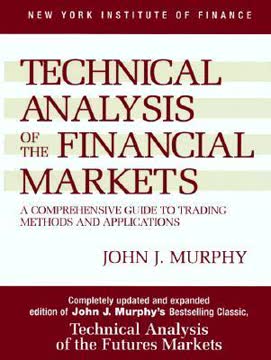Key Takeaways
1. All financial markets are interconnected, both domestically and globally
No market moves in isolation
Global linkages. The four main market groups - stocks, bonds, commodities, and currencies - are all interrelated. A change in one market often impacts the others. For example:
- Rising commodity prices often lead to higher interest rates and lower bond prices
- A falling dollar typically boosts commodity prices and emerging market returns
- Global stock markets tend to move together, especially during major declines
This interconnectedness extends beyond borders. Events in one country or region can quickly ripple through global markets. The 1997 Asian currency crisis, for instance, impacted markets worldwide.
2. Commodity prices and bond yields typically trend in the same direction
Rising commodity prices usually produce lower bond prices and higher bond yields
Inflation expectations. Commodity prices are seen as a barometer of inflation pressures. When commodity prices rise, it often signals increasing inflation, which erodes the value of fixed-income investments like bonds. As a result:
- Bond yields tend to rise (and bond prices fall) when commodity prices increase
- Bond yields tend to fall (and bond prices rise) when commodity prices decrease
The relationship is not always immediate or perfect, but it is a key intermarket principle to monitor. Industrial commodities like copper are especially important to watch as leading indicators for bonds and the economy.
3. Bonds usually lead stocks at major turning points in the economic cycle
Bonds peak before stocks and bottom before stocks
Economic foresight. The bond market is considered to have better foresight about economic conditions than the stock market. As a result:
- Bond prices often peak and yields bottom several months before stocks at major market tops
- Bond prices often bottom and yields peak several months before stocks at major market bottoms
This makes the bond market an important leading indicator for the stock market and economy. For example, the bond market peaked in 1987 several months before the stock market crash. Similarly, bonds bottomed in 2000 before stocks as the tech bubble burst.
4. The business cycle drives sector rotation within the stock market
Different market sectors do better at different stages of the business cycle
Cyclical shifts. As the economy moves through expansion and contraction, different stock market sectors tend to outperform:
- Early expansion: Consumer cyclicals, technology, transportation
- Mid expansion: Capital goods, basic materials
- Late expansion: Energy, materials, industrials
- Early contraction: Consumer staples, healthcare, utilities
- Late contraction: Financials, consumer cyclicals
Understanding where we are in the business cycle can help identify which sectors are likely to outperform. Relative strength analysis of sectors can also provide clues about the state of the economic cycle.
5. Real estate and housing are interest rate-sensitive, countercyclical assets
Housing and real estate are tied very closely to the direction of interest rates
Low rate beneficiary. Real estate tends to perform well when interest rates are falling, which often occurs during economic slowdowns. Key points:
- Lower mortgage rates increase housing affordability and demand
- REITs benefit from lower borrowing costs and often outperform when rates fall
- Housing can provide portfolio diversification when stocks are weak
However, the relationship is not always consistent. Periods of high inflation or deflation can impact real estate differently. The sector also follows its own long-term cycle of approximately 18 years.
6. Deflation changes traditional intermarket relationships
During deflation, bond prices rise while stocks fall
Paradigm shift. In a deflationary environment, some key intermarket relationships change:
- Bonds and stocks decouple, with bonds rising while stocks fall
- Falling commodity prices become bearish for stocks rather than bullish
- Cash and high-quality bonds become preferred assets
This was seen during the Great Depression of the 1930s and again to some extent in the early 2000s as deflationary pressures emerged. Recognizing deflationary conditions is crucial for proper asset allocation.
7. Ratio analysis helps identify relative strength between asset classes
A rising ratio line shows that the numerator is the stronger market
Comparative performance. Ratio charts divide one asset by another to show relative strength:
- Rising CRB/stock ratio = commodities outperforming stocks
- Rising bond/stock ratio = bonds outperforming stocks
- Rising gold/currency ratio = gold outperforming that currency
These ratios can identify major trend changes between asset classes and help guide asset allocation decisions. For example, the CRB/stock ratio bottoming in 2000 signaled a major shift from paper assets to hard assets.
8. Long-term economic cycles impact financial market trends
Each asset class has its "day in the sun"
Secular shifts. Several long-term cycles influence market behavior:
- Kondratieff Wave: ~55 year cycle in economic activity and inflation
- 18-year real estate cycle
- 4-year business cycle
These cycles help explain multi-year trends in different asset classes. For instance, the Kondratieff winter phase is associated with falling commodity prices and deflation, similar to conditions in the 1930s and early 2000s.
Understanding where we are in these long-term cycles can provide valuable context for shorter-term trends and asset allocation decisions.
9. Global diversification benefits diminish during major bear markets
World markets usually fall together at such times
Correlation convergence. While global diversification is generally beneficial, its advantages can decrease significantly during severe market downturns:
- In the 1987 crash, 1998 Asian crisis, and 2000-2002 bear market, global stocks fell in unison
- Emerging markets often experience even steeper declines than developed markets
- Currency fluctuations can exacerbate losses for foreign investments
This doesn't negate the long-term benefits of global diversification, but investors should be aware that it may not provide as much protection in extreme market conditions.
10. Currency trends significantly influence commodity prices and global returns
A falling dollar is bullish for commodities
Exchange rate impact. Currency movements have far-reaching effects:
- A falling dollar typically boosts commodity prices (priced in dollars)
- Weaker currencies benefit export-driven economies
- Currency trends impact the relative attractiveness of foreign investments
For example, the dollar's decline in 2002-2003 contributed to rising commodity prices and strong performance in emerging markets. Understanding currency trends is crucial for global investors and commodity traders.
Last updated:
FAQ
What's Intermarket Analysis: Profiting from Global Market Relationships about?
- Market Relationships: The book delves into the interconnectedness of financial markets, including stocks, bonds, commodities, and currencies, and how they influence each other.
- Intermarket Analysis Tool: John J. Murphy presents intermarket analysis as a branch of technical analysis, useful for predicting market trends and making informed trading decisions.
- Historical Context: It reviews significant market events from the 1980s to the early 2000s, illustrating the evolution of intermarket relationships during economic changes.
Why should I read Intermarket Analysis by John J. Murphy?
- Comprehensive Understanding: The book enhances your understanding of global market interactions, crucial for informed investment decisions.
- Practical Applications: It offers practical advice on applying intermarket analysis in real-world trading, valuable for both novice and experienced traders.
- Historical Insights: Murphy's analysis of past market events provides context and lessons to anticipate future market movements.
What are the key takeaways of Intermarket Analysis?
- Market Interconnections: All markets are linked, both domestically and globally, meaning changes in one can significantly impact others.
- Deflation vs. Inflation: The book discusses how deflationary trends can alter traditional market relationships, such as rising bond prices being bad for stocks.
- Sector Rotation: Understanding sector rotation is crucial, as different sectors perform better at various stages of the economic cycle.
What are the best quotes from Intermarket Analysis and what do they mean?
- "All markets are linked": Emphasizes the importance of considering multiple markets for accurate financial trend analysis.
- "Rising bond prices are actually bad for stocks": Highlights a critical shift in market dynamics during deflationary periods.
- "Charts don’t lie": Underscores the importance of technical analysis and charting in understanding market trends.
What is intermarket analysis as defined in Intermarket Analysis?
- Definition: Intermarket analysis studies relationships between different financial markets to forecast price movements.
- Key Components: Focuses on stocks, bonds, commodities, and currencies, providing insights into economic conditions and investment opportunities.
- Dynamic Nature: Relationships are not static and can change due to economic shifts, requiring traders to stay informed.
How does Intermarket Analysis explain the relationship between commodities and bonds?
- Inverse Relationship: Bond prices and commodities trend in opposite directions; when commodity prices rise, bond prices typically fall.
- Impact of Inflation: Rising commodity prices often signal inflation, leading to higher interest rates and lower bond prices.
- Historical Context: Provides historical examples to illustrate these relationships during significant economic events.
What role does the dollar play in intermarket analysis according to John J. Murphy?
- Dollar's Influence: A falling dollar is bullish for commodities, affecting their prices and U.S. export demand.
- Global Impact: Changes in the dollar's value influence global markets, affecting commodity prices and stock valuations.
- Investment Strategies: Understanding dollar movements aids in better asset allocation, especially in commodities and multinational stocks.
How does Intermarket Analysis address the concept of deflation?
- Deflationary Trends: Deflation alters traditional market relationships, being good for bonds but bad for commodities and potentially stocks.
- Historical Examples: Provides context on how deflationary pressures impacted markets in the past.
- Investment Implications: Guides investment strategies, particularly in choosing between asset classes during economic downturns.
What is the significance of sector rotation in Intermarket Analysis?
- Sector Performance: Different sectors perform better at various economic cycle stages, guiding investment strategies.
- Investment Strategy: Recognizing outperforming sectors helps in resource allocation during economic transitions.
- Historical Context: Provides examples of sector rotation during past economic cycles, emphasizing its importance.
How can I apply the concepts from Intermarket Analysis to my trading strategy?
- Comprehensive Market Analysis: Evaluate multiple markets simultaneously to enhance trading decisions.
- Monitor Economic Indicators: Key indicators like interest rates and commodity prices provide insights into market trends.
- Adapt to Market Conditions: Be flexible, adjusting focus based on current market conditions and sector performance.
How do commodities influence the stock market according to Intermarket Analysis?
- Inflation Hedge: Commodities serve as an inflation hedge, with rising prices indicating strengthening economic conditions.
- Sector Performance: Rising commodity prices boost sectors like energy and materials, lifting the overall stock market.
- Market Sentiment: Changes in commodity prices affect market sentiment and investor behavior, influencing stock prices.
What is the significance of the yield curve in Intermarket Analysis?
- Economic Indicator: The yield curve reflects economic health, with a normal curve indicating growth and an inverted curve signaling recession.
- Investment Decisions: Understanding the yield curve aids in bond investment decisions and anticipating stock market changes.
- Market Reactions: Shifts in the yield curve impact various asset classes, highlighting market interconnectedness.
Review Summary
Intermarket Analysis receives mixed reviews, with an average rating of 4.17/5. Readers appreciate Murphy's clear writing and insights into market relationships, particularly during deflationary periods. The book is praised for its comprehensible explanations of complex economic concepts and its value for understanding market interactions. However, some criticize its reliance on historical data and limited coverage of currencies. While considered dated by some, many still find it useful for grasping the big picture of market dynamics and sector rotations.
Similar Books










Download PDF
Download EPUB
.epub digital book format is ideal for reading ebooks on phones, tablets, and e-readers.







